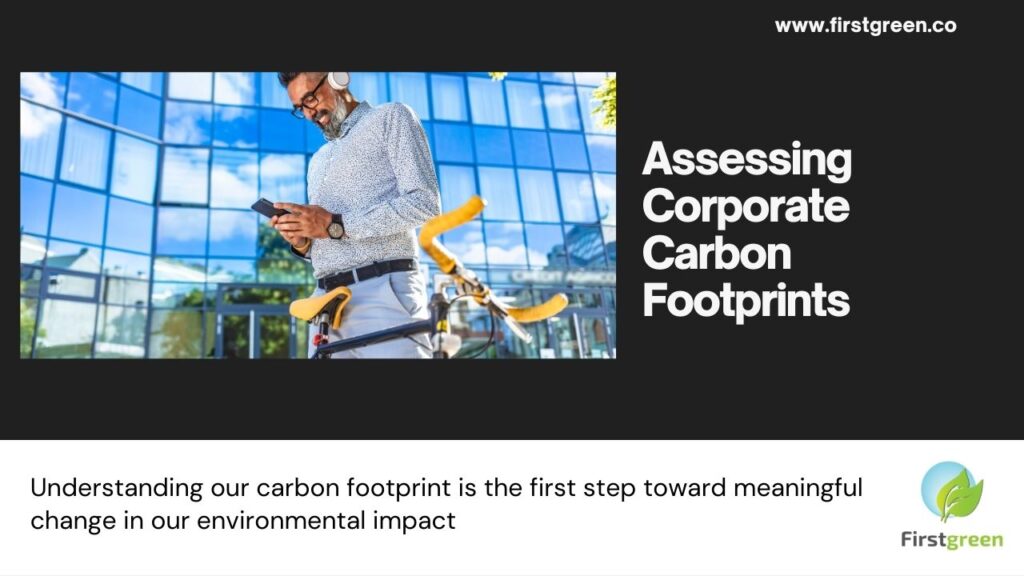Assessing Corporate Carbon Footprints: A Guide for Action

Introduction
In today’s environmentally-conscious market, understanding and managing a corporate carbon footprint is not just a moral obligation but a business imperative. A corporate carbon footprint represents the total greenhouse gas (GHG) emissions caused directly or indirectly by a business, and assessing it accurately is the first step towards effective management and reduction strategies.
Why Assess Your Carbon Footprint?
The drive towards sustainability is being fueled by increasing regulatory requirements, investor pressures, and a growing demand from consumers for environmentally responsible operations. Assessing the carbon footprint allows companies to:
- Identify emission hotspots: Understanding where emissions are coming from helps target reduction efforts effectively.
- Improve corporate image: Demonstrating commitment to sustainability can enhance brand reputation and customer loyalty.
- Comply with regulations: Staying ahead of environmental regulations can avoid penalties and take advantage of incentives.
- Reduce costs: Often, reducing energy consumption and waste can lead to significant cost savings.
Steps to Assessing a Corporate Carbon Footprint
- Define Scope and Boundaries
- Determine which parts of the business to include in the assessment. This could range from direct operations to more extended supply chain activities.
- Classify Emissions into Scopes
- Scope 1: Direct emissions from owned or controlled sources (e.g., company vehicles and facilities).
- Scope 2: Indirect emissions from the generation of purchased electricity, heat, or steam.
- Scope 3: All other indirect emissions that occur in a company’s value chain (e.g., business travel, procurement, waste disposal, and use of sold products).
- Data Collection
- Gather data on energy use, fuel consumption, waste generation, and any other activities that result in GHG emissions. This could involve reviewing utility bills, fuel receipts, and even engaging suppliers.
- Calculate Emissions
- Use GHG emissions factors to convert energy use and other data into carbon dioxide equivalents (CO2e). Tools like the GHG Protocol provide methodologies and emission factors for this purpose.
- Analyze and Set Reduction Targets
- With a clear picture of where emissions are coming from, set realistic reduction targets based on industry benchmarks and corporate sustainability goals.
- Implement Reduction Strategies
- Depending on the emission sources, strategies might include energy efficiency improvements, switching to renewable energy sources, optimizing logistics, or investing in carbon offset projects.
- Monitor and Report
- Regularly track emissions against targets and report these findings to stakeholders through sustainability reports or integrated into annual financial reports.
Tools and Resources
Several tools and software platforms can aid in the carbon footprint assessment process. Platforms like Sustain Life offer streamlined approaches to measure, manage, and report emissions, making sustainability accessible for businesses at all stages of their environmental journey. These platforms often include features like automated data collection, real-time monitoring, and customized reporting that simplify the complexities of carbon accounting.
Case Study: Implementing Carbon Footprint Assessment in India
Companies like DLF, one of India’s largest real estate developers, have adopted comprehensive sustainability practices to monitor and reduce their carbon footprint. By integrating advanced building management systems and adopting green building certifications, DLF has significantly reduced its operational emissions. The company’s proactive measures demonstrate how robust sustainability strategies can result in operational efficiencies and compliance with global standards.
Conclusion
Understanding and reducing a corporate carbon footprint is a journey that requires commitment and continuous improvement. By systematically assessing emissions, setting clear targets, and implementing effective strategies, companies can not only reduce their environmental impact but also enhance their operational efficiency and market position.
Firstgreen Consulting’s Role
Partnering with experts like Firstgreen Consulting can provide additional leverage in navigating the complexities of carbon footprint assessment and management. Firstgreen offers specialized services in energy management and sustainability strategies, assisting companies in achieving their environmental goals while optimizing performance and compliance.